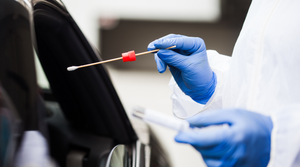Coiled Silicon Nanowires Spring to Action in Flexible Electronics
January 26, 2011
|
Silicon nanowire coils can be stretched 104% beyond their original length. Image: NC State. |
Flexible electronics are no longer a stretch of the imagination. In fact, researchers at North Carolina State University (NC State) believe that they have made significant progress in the field by fabricating silicon nanowire coils on an elastomeric substrate. Intended to promote stretchability without compromising electric performance, this design could help to realize flexible electronics-based health-monitoring devices as well as other medical applications.
While experimenting with flexible electronics, various research teams have explored 'buckling' electronic materials to produce wavy shapes akin to an accordion's design. However, maximum strains in these configurations occur at localized positions; structure failure can thus result when failure strain is reached at one such localized position, according to the NC State team.
With this issue in mind, the researchers employed a controlled 3-D buckling process to create coiled silicon nanowires. "An ideal shape to accommodate large deformation would lead to a uniform strain distribution along the entire length of the structure; a coil spring is one such ideal shape," says Yong Zhu, one of the researchers that created the nanowire coils and an assistant professor of mechanical and aerospace engineering at NC State. "As a result, the wavy materials cannot come close to the coils' degree of stretchability."
To achieve their design, the scientists first prestrained and ultraviolet/ozone (UVO)-treated PDMS substrates. They then transferred the silicon nanowires onto the substrates and buckled them upon release of the strain. "Two buckling modes (the in-plane wavy mode and the three-dimensional coiled mode) were found; a transition between them was achieved by controlling the UVO treatment of PDMS. Structural characterization revealed that the nanowire coils were oval-shaped," according to an abstract that appeared in a recent issue of the journal ACS Nano.
The researchers report that the coiled structure demonstrated a stretchability of 104%. They also state that the coil shape accommodates large tension, compression, bending, and twisting, which could prove valuable for stretchable electronic applications. While early data and tests are cause for optimism, the scientists still have their work cut out for them, however. "We are working to improve the reliability of the electrical performance when the coils are stretched to the limit of their mechanical stretchability," Zhu says.
You May Also Like



